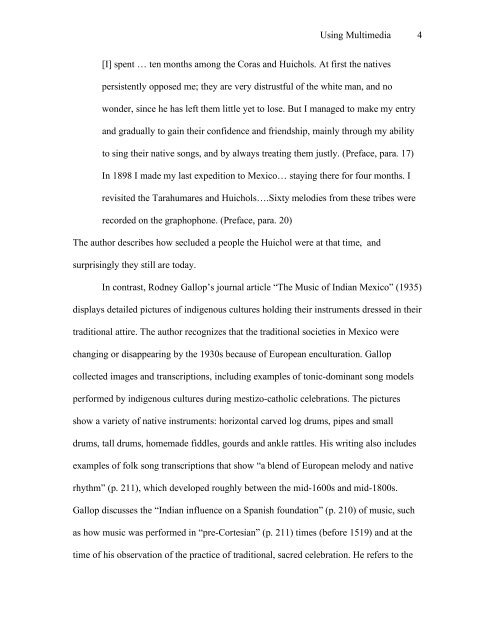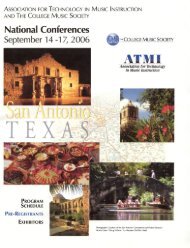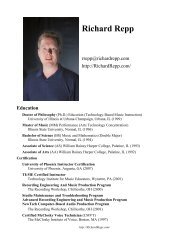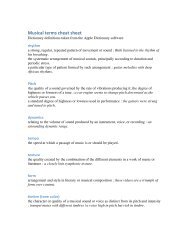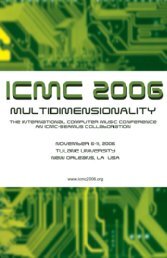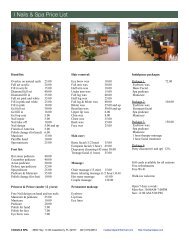Using Multimedia to Expand the Audience of ... - Richard Repp
Using Multimedia to Expand the Audience of ... - Richard Repp
Using Multimedia to Expand the Audience of ... - Richard Repp
Create successful ePaper yourself
Turn your PDF publications into a flip-book with our unique Google optimized e-Paper software.
<strong>Using</strong> <strong>Multimedia</strong> 4<br />
[I] spent … ten months among <strong>the</strong> Coras and Huichols. At first <strong>the</strong> natives<br />
persistently opposed me; <strong>the</strong>y are very distrustful <strong>of</strong> <strong>the</strong> white man, and no<br />
wonder, since he has left <strong>the</strong>m little yet <strong>to</strong> lose. But I managed <strong>to</strong> make my entry<br />
and gradually <strong>to</strong> gain <strong>the</strong>ir confidence and friendship, mainly through my ability<br />
<strong>to</strong> sing <strong>the</strong>ir native songs, and by always treating <strong>the</strong>m justly. (Preface, para. 17)<br />
In 1898 I made my last expedition <strong>to</strong> Mexico… staying <strong>the</strong>re for four months. I<br />
revisited <strong>the</strong> Tarahumares and Huichols….Sixty melodies from <strong>the</strong>se tribes were<br />
recorded on <strong>the</strong> graphophone. (Preface, para. 20)<br />
The author describes how secluded a people <strong>the</strong> Huichol were at that time, and<br />
surprisingly <strong>the</strong>y still are <strong>to</strong>day.<br />
In contrast, Rodney Gallop’s journal article “The Music <strong>of</strong> Indian Mexico” (1935)<br />
displays detailed pictures <strong>of</strong> indigenous cultures holding <strong>the</strong>ir instruments dressed in <strong>the</strong>ir<br />
traditional attire. The author recognizes that <strong>the</strong> traditional societies in Mexico were<br />
changing or disappearing by <strong>the</strong> 1930s because <strong>of</strong> European enculturation. Gallop<br />
collected images and transcriptions, including examples <strong>of</strong> <strong>to</strong>nic-dominant song models<br />
performed by indigenous cultures during mestizo-catholic celebrations. The pictures<br />
show a variety <strong>of</strong> native instruments: horizontal carved log drums, pipes and small<br />
drums, tall drums, homemade fiddles, gourds and ankle rattles. His writing also includes<br />
examples <strong>of</strong> folk song transcriptions that show “a blend <strong>of</strong> European melody and native<br />
rhythm” (p. 211), which developed roughly between <strong>the</strong> mid-1600s and mid-1800s.<br />
Gallop discusses <strong>the</strong> “Indian influence on a Spanish foundation” (p. 210) <strong>of</strong> music, such<br />
as how music was performed in “pre-Cortesian” (p. 211) times (before 1519) and at <strong>the</strong><br />
time <strong>of</strong> his observation <strong>of</strong> <strong>the</strong> practice <strong>of</strong> traditional, sacred celebration. He refers <strong>to</strong> <strong>the</strong>


